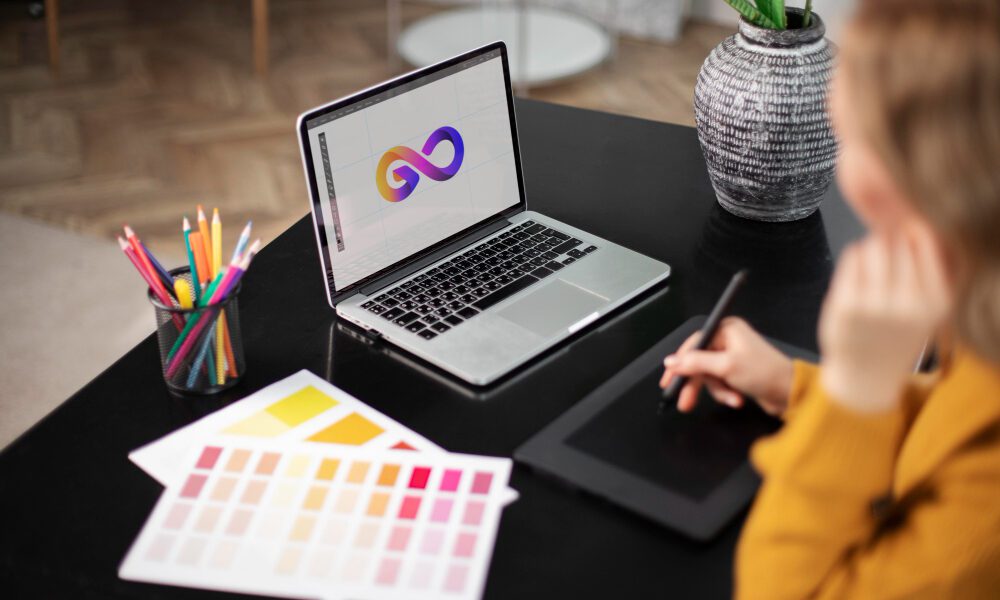The Psychology Behind Effective Logo Design: How Colors and Shapes Influence Perception

In the world of marketing and branding, logos serve as the visual cornerstone of a company’s identity. They are more than just graphic symbols; they are powerful tools that evoke emotions, convey messages, and shape perceptions. One of the key elements that contribute to the effectiveness of a logo is its color and shape.
Understanding the psychology behind effective logo design is essential for creating professionally designed logos that resonate with audiences and leave a lasting impression. By understanding the psychological associations of colors and shapes, designers can strategically select hues and shapes that align with the brand’s identity and messaging. Leveraging the power of color and shape psychology allows logos to effectively communicate with audiences on a subconscious level, evoking emotional responses and conveying key messages.
The Power of Color
Color is the most immediate and impactful aspect of logo design. It can evoke emotions, convey meaning, and influence behavior. Different colors can evoke different psychological responses, making them a critical component of logo design.
- Red: Red is associated with energy, passion, and excitement. It can stimulate appetite and create a sense of urgency, making it a popular choice for brands in the food and beverage industry.
- Blue: Blue is often associated with trust, security, and professionalism. It is commonly used by technology companies and financial institutions to convey reliability and stability.
- Yellow: Yellow is associated with warmth, optimism, and youthfulness. It can grab attention and create a sense of happiness, making it suitable for brands targeting a youthful or playful audience.
- Green: Green is associated with nature, growth, and health. It symbolizes freshness and sustainability, making it a popular choice for eco-friendly and organic brands.
- Black: Black is associated with sophistication, elegance, and authority. It can create a sense of luxury and exclusivity, making it a common choice for high-end brands.
The Influence of Shape
In addition to color, the shape of a logo plays a significant role in shaping perception and eliciting emotional responses. Different shapes convey different meanings and can evoke specific associations in the minds of consumers.
- Circular Shapes: Circles and curves are associated with unity, harmony, and community. They convey a sense of inclusivity and connection, making them suitable for brands that prioritize relationships and collaboration.
- Angular Shapes: Angular shapes such as triangles and squares are associated with strength, stability, and modernity. They convey a sense of precision and efficiency, making them ideal for brands in industries such as technology and finance.
- Organic Shapes: Organic shapes mimic natural forms and are associated with creativity, fluidity, and authenticity. They evoke a sense of warmth and approachability, making them suitable for brands that value creativity and innovation.
- Geometric Shapes: Geometric shapes such as squares, rectangles, and hexagons convey order, symmetry, and balance. They create a sense of structure and reliability, making them a popular choice for brands that emphasize professionalism and trustworthiness.
By carefully selecting shapes that align with the brand’s personality and values, designers can create logos that resonate with audiences and convey the desired message effectively.
Case Studies: Applying Psychology to Logo Design
To illustrate the impact of color and shape psychology on logo design, let’s examine a few case studies:
- McDonald’s: The fast-food giant’s iconic golden arches logo features vibrant red and yellow colors. Red stimulates appetite and creates a sense of urgency, while yellow evokes happiness and positivity. The rounded, arching shape of the logo conveys a sense of warmth and friendliness, making it inviting to customers of all ages.
- IBM: The logo of the multinational technology company features solid blue lettering against a white background. Blue symbolizes trust, reliability, and professionalism, aligning with IBM’s positioning as a leader in the tech industry. The angular, geometric shapes of the letters convey a sense of precision and innovation, reflecting the company’s commitment to cutting-edge technology.
- Starbucks: The global coffeehouse chain’s logo features a circular green icon with a stylized mermaid figure. Green symbolizes freshness, growth, and sustainability, reflecting Starbucks’ commitment to ethical sourcing and environmental stewardship. The circular shape of the logo conveys a sense of unity and community, inviting customers to gather and connect over coffee.
Conclusion
The psychology behind effective logo design is a powerful tool for brands looking to make a lasting impression on consumers. By understanding the psychological associations of colors and shapes, designers can create logos that resonate with audiences subconsciously, evoke emotional responses, and effectively communicate key messages. By leveraging the power of color and shape psychology, brands can create logos that stand out in a crowded marketplace and leave a lasting impression on consumers’ minds.





